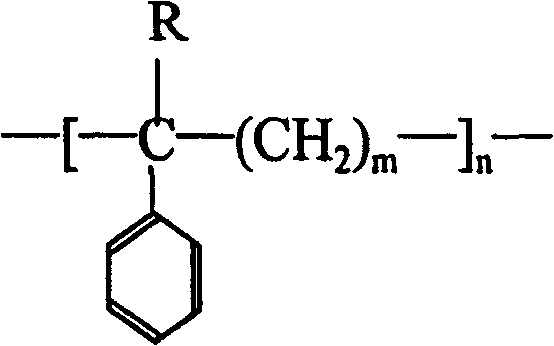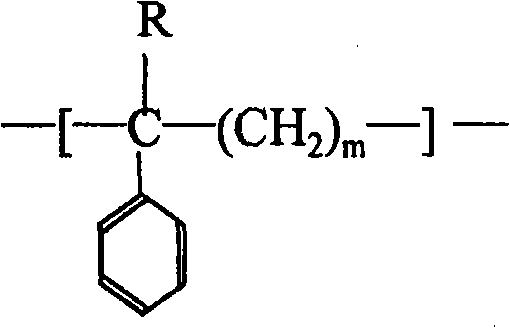Dyeable fine denier polypropylene fibers of clay soil/polyolefin particle and preparation method thereof
A polypropylene fiber and polyolefin technology, applied in the directions of single-component polyolefin rayon, melt spinning, etc., can solve the problems such as the interlayer spacing of organically modified montmorillonite that has not been explained, and achieve the effect of reducing costs
- Summary
- Abstract
- Description
- Claims
- Application Information
AI Technical Summary
Problems solved by technology
Method used
Image
Examples
Embodiment 1
[0031] Take 10 g of bentonite raw soil (purchased by Rockwood Special Chemicals Company, brand Garamite-2578) and add it to 200 g of distilled water. In a water bath at 80° C., adjust the pH to 1 with 0.1 mol / L hydrochloric acid, stir for 3 hours, and add 3 g of Shuangten Octyl dimethyl ammonium chloride organic modifier, stirred at constant temperature for 3 to 4 hours, cooled naturally, centrifuged, washed repeatedly, dried, and ground through a 200-mesh sieve to obtain organic modified bentonite;
[0032] Add 250g of deionized water into a 500ml four-neck flask, raise the temperature to 85°C, add 6g of polyvinyl alcohol, and start stirring at a stirring speed of 200 rpm. After the polyvinyl alcohol is completely dissolved, cool down to 70°C. Add 2.0 g of organobentonite modified with dioctadecyl dimethyl ammonium salt into a beaker containing 100 g of olefin monomer, add 0.7 g of dibenzoyl peroxide (BPO) after ultrasonic dispersion, and disperse evenly. Add the dispersed st...
Embodiment 2
[0037] The same method steps as in Example 1, the difference from Example 1 is that the amount of organic bentonite added is 4.0g.
[0038] The polypropylene fine denier fiber obtained by the above method is dyed with disperse dye under normal pressure, and the dye uptake rate reaches 67.6%.
Embodiment 3
[0040] The same method steps as in Example 1, the difference from Example 1 is that the amount of organic bentonite added is 6.0 g.
[0041] The polypropylene fine denier fiber obtained by the above method is dyed with disperse dye under normal pressure, and the dye uptake rate reaches 79.8%.
PUM
 Login to View More
Login to View More Abstract
Description
Claims
Application Information
 Login to View More
Login to View More - R&D
- Intellectual Property
- Life Sciences
- Materials
- Tech Scout
- Unparalleled Data Quality
- Higher Quality Content
- 60% Fewer Hallucinations
Browse by: Latest US Patents, China's latest patents, Technical Efficacy Thesaurus, Application Domain, Technology Topic, Popular Technical Reports.
© 2025 PatSnap. All rights reserved.Legal|Privacy policy|Modern Slavery Act Transparency Statement|Sitemap|About US| Contact US: help@patsnap.com



